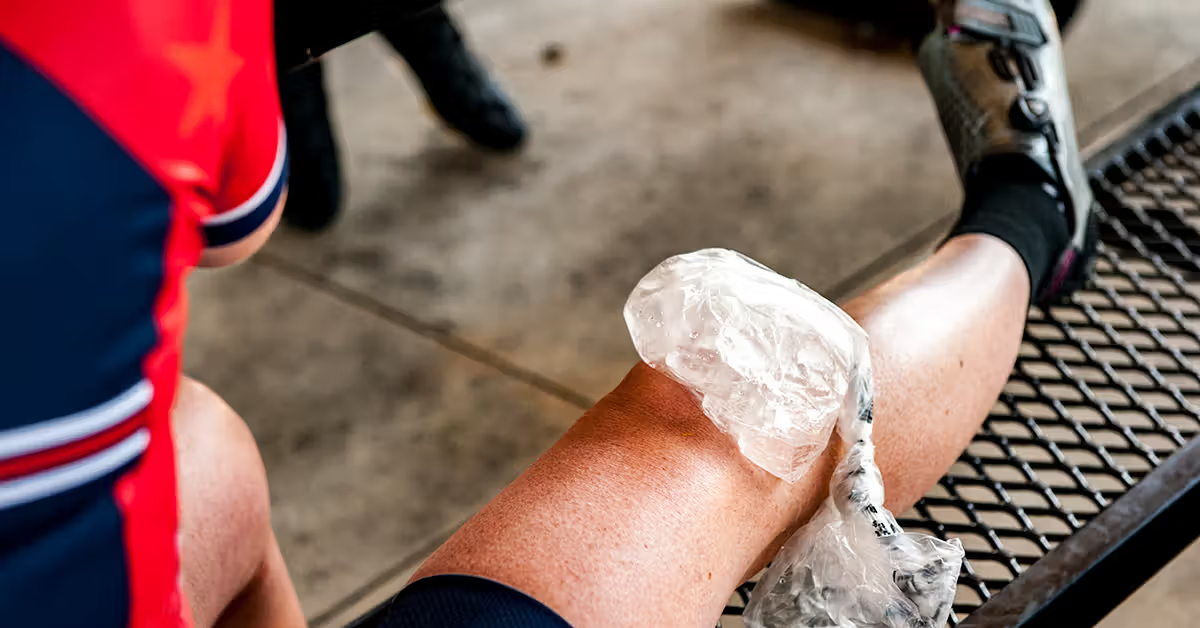As a specialist doctor, I have treated many patients with sprained knees, and I understand how frustrating and painful this injury can be. Whether you twisted your knee while playing sports, had a bad fall, or simply took a wrong step, a sprained knee can limit your movement and affect daily activities. Fortunately, with the right approach, you can speed up recovery and get back on your feet quickly.
In this article, I’ll share my experience and professional advice on how to heal a sprained knee fast and effectively.
Understanding a Sprained Knee

A knee sprain occurs when the ligaments (the tough bands of tissue that connect bones) are stretched or torn due to excessive force. The severity of the sprain can range from mild to severe:
- Grade 1 (Mild Sprain): Ligaments are stretched but not torn, causing mild pain and swelling.
- Grade 2 (Moderate Sprain): Partial tearing of the ligament, leading to swelling, pain, and instability.
- Grade 3 (Severe Sprain): Complete tear of the ligament, causing significant pain, swelling, and difficulty in moving the knee.
How to Heal a Sprained Knee Quickly?
If you want to recover as fast as possible, following a proper treatment plan is essential. Here’s what I recommend:
1. Follow the RICE Method
One of the first things I tell my patients is to follow the RICE protocol:
- Rest: Avoid putting weight on the knee for the first few days.
- Ice: Apply ice packs for 15–20 minutes every few hours to reduce swelling and pain.
- Compression: Use a knee brace or elastic bandage to provide support and prevent excessive movement.
- Elevation: Keep your knee elevated above heart level to reduce swelling.
2. Use Pain Relievers If Needed
Over-the-counter pain medications like ibuprofen (Advil) or naproxen (Aleve) can help reduce pain and inflammation. However, I always advise my patients not to rely too much on painkillers and to focus on natural healing.
3. Gentle Stretching and Strengthening Exercises
Once the initial pain and swelling reduce, starting gentle exercises is crucial for faster healing. Some effective exercises include:
- Straight Leg Raises: Strengthens the quadriceps without putting strain on the knee.
- Heel Slides: Helps regain knee movement without excessive stress.
- Seated Knee Extensions: Improves flexibility and mobility.
I had a young athlete who recovered from a moderate knee sprain within three weeks by consistently doing these exercises under supervision. The key is to start slow and increase intensity gradually.
4. Wear a Knee Brace for Support
A knee brace can provide extra stability and prevent further injury. I often recommend a hinged brace for moderate sprains and a simple compression sleeve for mild sprains.
5. Avoid Activities That Worsen the Injury
Many of my patients ask if they can continue walking or playing sports after a knee sprain. My answer depends on the severity of the sprain, but in general, avoid:
- Running or jumping too soon.
- Carrying heavy loads that strain the knee.
- Sitting in awkward positions for long periods.
Pushing through pain can slow healing and lead to long-term problems, so patience is key.
6. Consider Physical Therapy for Faster Recovery
If your sprain is moderate or severe, visiting a physical therapist can help speed up recovery. I’ve seen many patients regain full strength and stability much faster with guided therapy.
7. Eat a Healthy Diet to Promote Healing
Your body needs proper nutrition to repair ligaments. I always advise my patients to eat foods rich in:
- Protein (chicken, fish, eggs, nuts) – Helps tissue repair.
- Vitamin C (oranges, strawberries, bell peppers) – Supports collagen production for ligament healing.
- Omega-3 Fatty Acids (salmon, flaxseeds, walnuts) – Reduces inflammation.
Also Read: Can A Swollen Knee Be Dangerous – A Comprehensive Overview!
How Long Does It Take to Heal a Sprained Knee?
Recovery time depends on the severity of the sprain:
- Mild sprain: 1–2 weeks
- Moderate sprain: 3–6 weeks
- Severe sprain: 2–3 months (may require surgery in some cases)
One of my patients, a marathon runner, recovered from a moderate knee sprain in just four weeks by following these steps strictly. However, every person heals differently, so listening to your body is important.
When to See a Doctor?
While most knee sprains heal with home care, see a doctor if:
- You hear a popping sound at the time of injury.
- Your knee is very swollen or deformed.
- You cannot bear weight on your leg.
- The pain is severe and does not improve with rest.
FAQ’s
1. How long does it take to heal a sprained knee?
Recovery time depends on severity: mild sprains take 1–2 weeks, moderate sprains 3–6 weeks, and severe sprains 2–3 months.
2. Can I walk on a sprained knee?
For mild sprains, walking is okay with support. For moderate or severe sprains, rest and limited movement are necessary for healing.
3. Should I wear a knee brace for a sprained knee?
Yes, a knee brace provides stability and prevents further injury, especially during the healing phase.
4. Is it okay to exercise with a sprained knee?
Avoid strenuous activities early on, but gentle stretching and strengthening exercises can aid recovery once swelling reduces.
5. Can ice help heal a sprained knee faster?
Yes, applying ice for 15–20 minutes every few hours reduces swelling and speeds up healing.
6. When should I see a doctor for a sprained knee?
See a doctor if you hear a popping sound, have severe swelling, can’t bear weight, or the pain worsens after a few days.
7. What foods help heal a sprained knee?
Eat protein-rich foods (chicken, eggs), vitamin C sources (oranges, peppers), and omega-3s (salmon, nuts) to support tissue repair.
8. Can I speed up my knee sprain recovery?
Yes, by following the RICE method, doing gentle exercises, eating well, and avoiding activities that strain the knee.
Final Thoughts
Healing a sprained knee quickly requires a combination of rest, proper treatment, and gradual strengthening. Based on my experience, those who follow these guidelines recover much faster and prevent future knee problems. Remember, taking care of your knee now will help you stay active and pain-free in the long run. If you’re unsure about your recovery, always seek medical advice.






